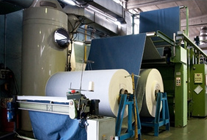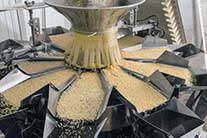California recently joined the majority of states when it enacted a partial sales and use tax exemption for property purchased for use in manufacturing and research and development. The exemption is established under Revenue and Code section 6377.1, as further explained under Sales and Use Tax Regulation 1525.4 with an effective date of July 1, 2014. The exemption is subject to a two hundred million annual cap, and it effectively reduces the tax rate by approximately four percent (4%) to the otherwise applicable rate. It actually applies to a rather broad scope of industries and even extends to real property in some circumstances. Like most special tax exemptions, however, there are a number of qualifying factors that must be met before you can take advantage of it. This article will briefly describe the threshold factors that must be met to qualify for the exemption, and how to utilize and support the exemption.
How to Qualify for the Exemption
First, you must be a “Qualified person” that is primarily engaged in those lines of business described in Codes 3111 to 3399, 541711 or 541712 of the Northern American Industry Classification System (NAICS). In summary, the referenced Codes pertain to a variety of manufacturing, and research and development activities. Examples include manufactures of food and food ingredients, beer, wine, textiles and fabrics, apparel, printing products, chemicals and cleaning products, computer hardware, construction materials, appliances, furniture and automobile parts. Primarily engaged is defined as being engaged in the described line of business fifty percent (50%) or more of the time.
 Next, you need to establish that the property at issue qualifies. Qualified property includes machinery and equipment, including component parts and contrivances; equipment or devices used or required to operate, control, regulate or maintain the equipment and machinery, including computers and software; pollution control equipment; and special purpose buildings. Special purpose buildings are buildings used as an integral part of the manufacturing, processing, fabricating, or recycling process, or that constitute a research or storage facility. Our firm was involved in drafting the Regulatory language that pertains to special purpose buildings as it relates to construction contractors. Without getting too detailed, because a contractor is typically considered the consumer of the items it installs, it is generally necessary for the contractor to utilize the exemption at its acquisition level. Qualified property must be used primarily (50% or greater) in the manufacturing or research and development processes.
Next, you need to establish that the property at issue qualifies. Qualified property includes machinery and equipment, including component parts and contrivances; equipment or devices used or required to operate, control, regulate or maintain the equipment and machinery, including computers and software; pollution control equipment; and special purpose buildings. Special purpose buildings are buildings used as an integral part of the manufacturing, processing, fabricating, or recycling process, or that constitute a research or storage facility. Our firm was involved in drafting the Regulatory language that pertains to special purpose buildings as it relates to construction contractors. Without getting too detailed, because a contractor is typically considered the consumer of the items it installs, it is generally necessary for the contractor to utilize the exemption at its acquisition level. Qualified property must be used primarily (50% or greater) in the manufacturing or research and development processes.
It is worth noting that the exemption also applies to leases of qualified property. Although the exemption applies to property acquired after July 1, 2014, it may apply to a lease entered into prior to that date. For example, lease receipts payable following July 1, 2014 under a five year lease initiated January 1, 2010, may qualify.
How to Utilize and Support the Exemption
 For equipment and machinery purchases made inside of California that are subject to sales tax, it is necessary to issue the seller an exemption certificate at the time of the purchase. The form of the certificate is provided for under Regulation 1524.5 and it operates in a similar manner to a resale certificate. The qualified purchaser issues a completed certificate to the seller, thereby relieving the seller of the obligation to pay the full amount of tax. If it is later found that the exemption does not apply, the issuing purchaser is held responsible for the tax. Sellers of machinery and equipment should make certain that they protect themselves by accepting a timely and complete certificate. For purchases made outside of California from an unpermitted retailer, the purchaser, who is subject to use tax, will claim the exemption by claiming the deduction on their sales and use tax return.
For equipment and machinery purchases made inside of California that are subject to sales tax, it is necessary to issue the seller an exemption certificate at the time of the purchase. The form of the certificate is provided for under Regulation 1524.5 and it operates in a similar manner to a resale certificate. The qualified purchaser issues a completed certificate to the seller, thereby relieving the seller of the obligation to pay the full amount of tax. If it is later found that the exemption does not apply, the issuing purchaser is held responsible for the tax. Sellers of machinery and equipment should make certain that they protect themselves by accepting a timely and complete certificate. For purchases made outside of California from an unpermitted retailer, the purchaser, who is subject to use tax, will claim the exemption by claiming the deduction on their sales and use tax return.
To support the exemption, it is necessary to retain copies of purchase orders, contracts and invoices which adequately describe the property. Auditors typically will investigate the nature of the business and review the assigned NIACS code to confirm the purchaser qualifies. Under most circumstances, the qualifying use will be apparent, but an auditor may request to review the manufacturing or research and development facility to gain additional assurances. Photographs can be a useful tool in this regard. For businesses with multiple divisions and a variety of activities, the issue of whether the purchaser or property meets the fifty percent primary purpose test may arise. In that case, revenue and expenses associated with the various divisions and activities may be reviewed.
Claims for Refund
The law permits refunds to be issued for overpayments of tax on qualifying purchases. The same rules apply as discussed above, but it is important to recognize the procedural rules that apply to purchases subject to sales tax versus purchases subject to use tax. For purchases subject to sales tax, California requires the refund to be processed through the seller. Refunds for purchases subject to use tax, however, may be obtained directly from the state by the purchaser.

